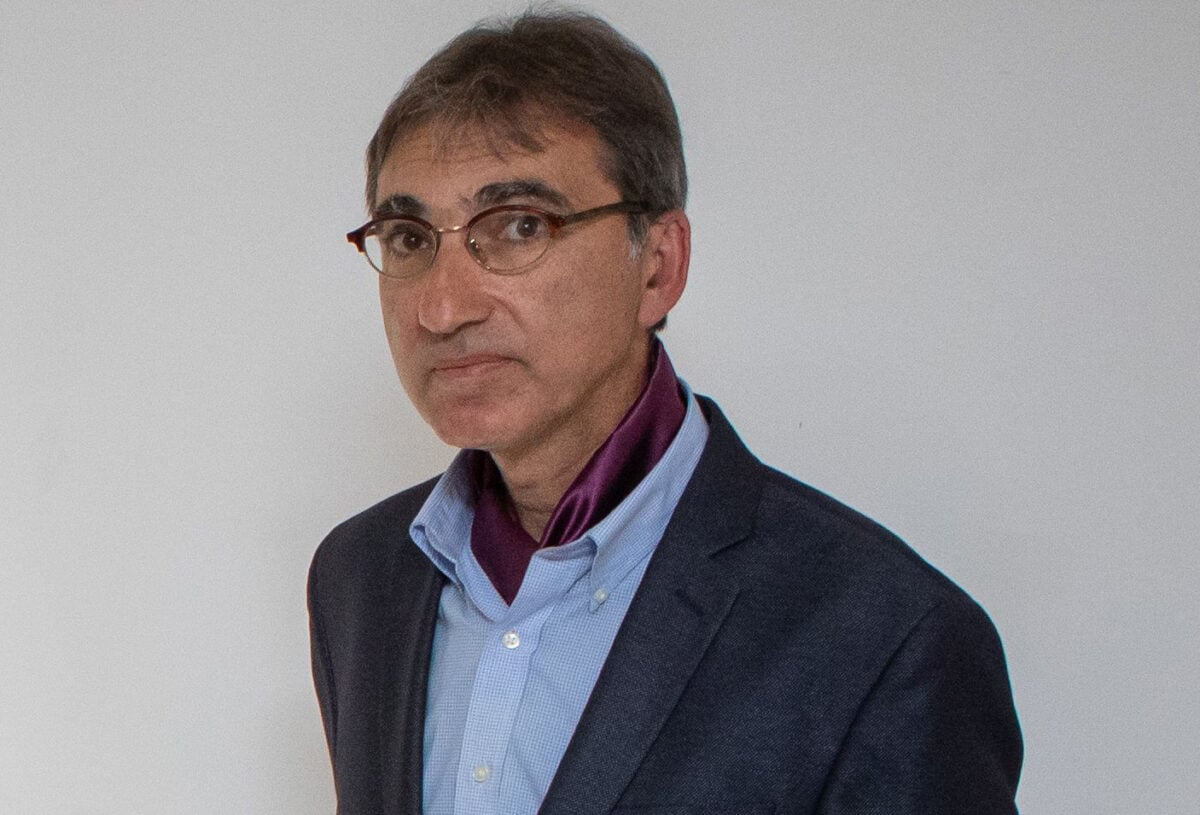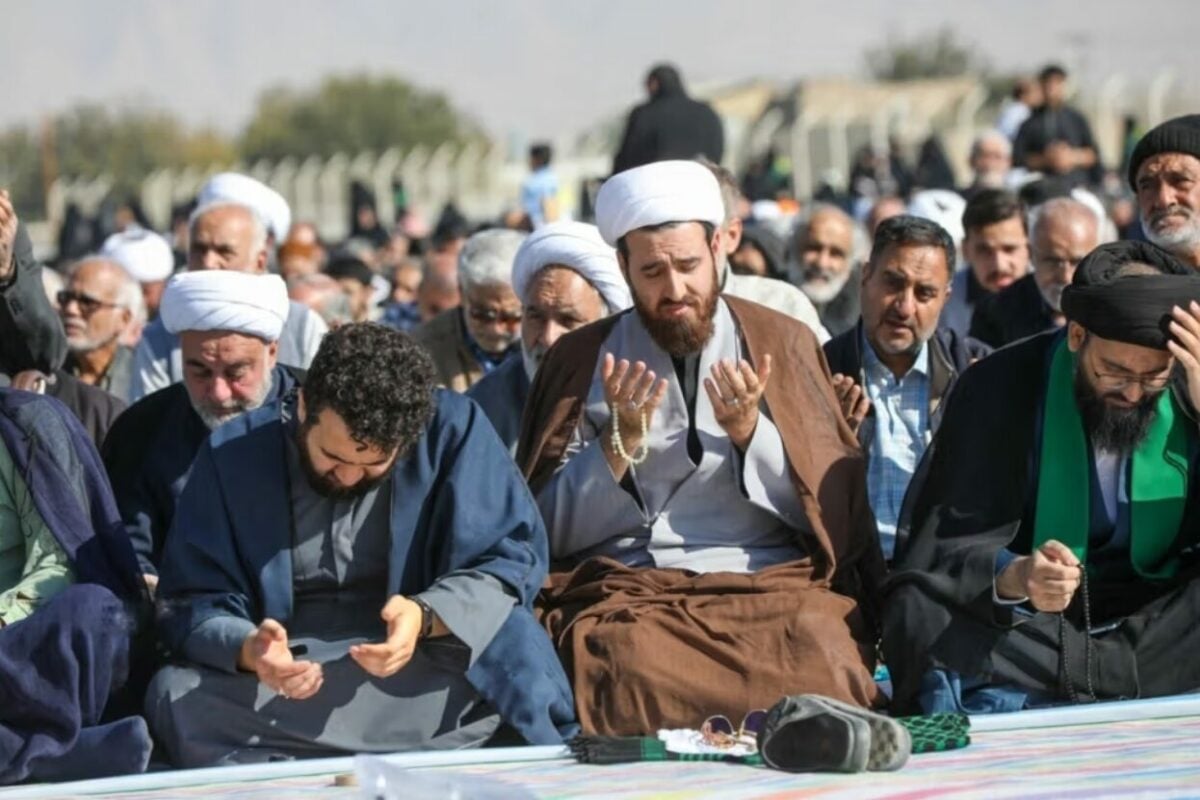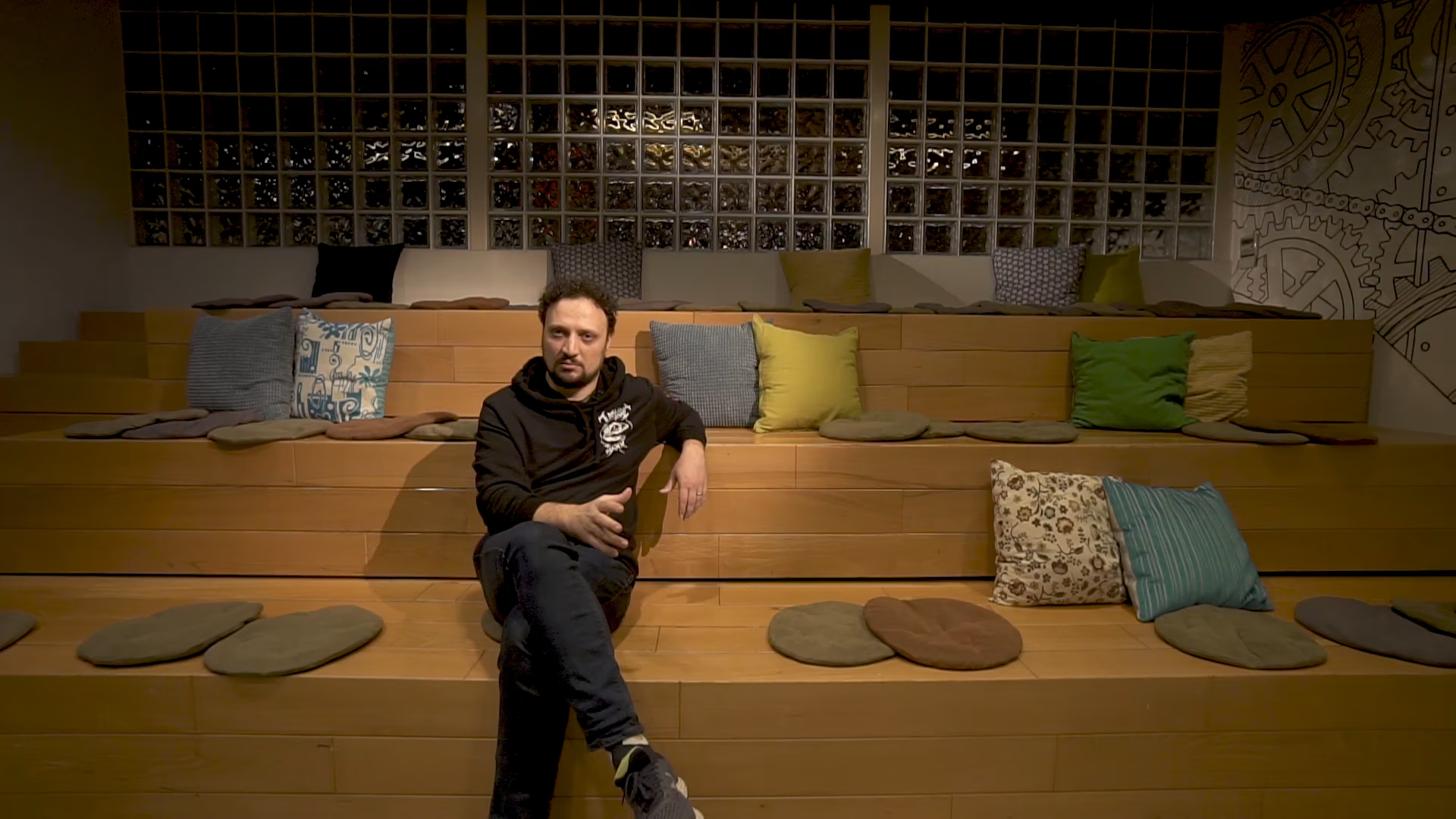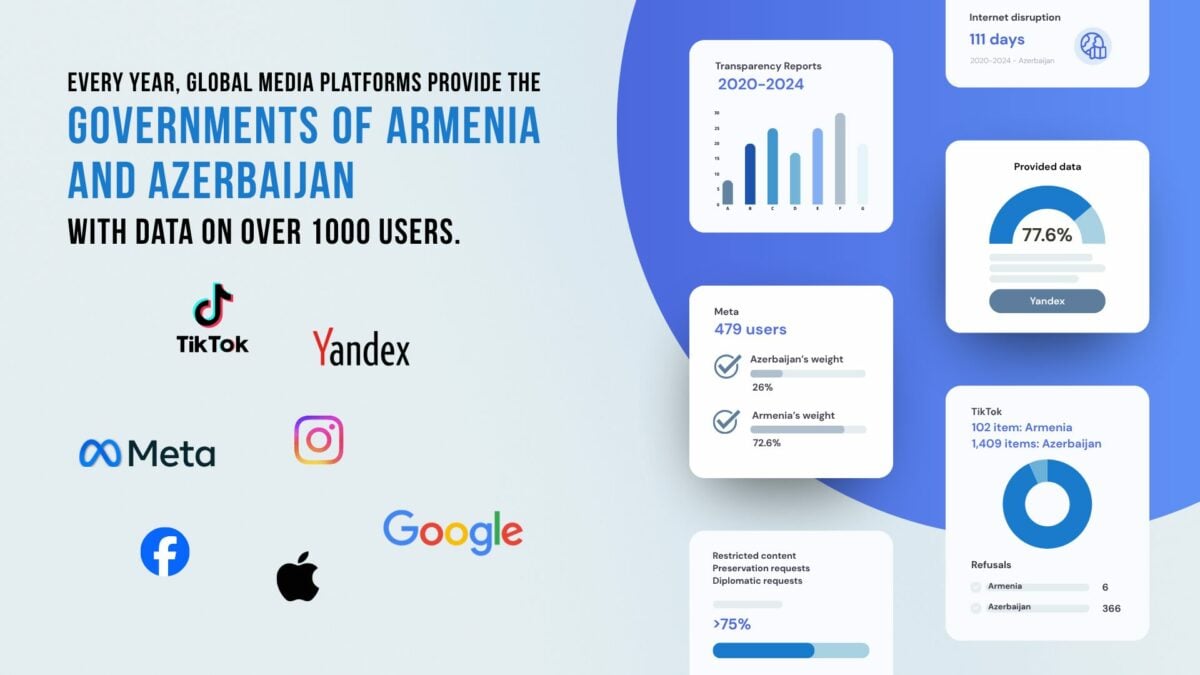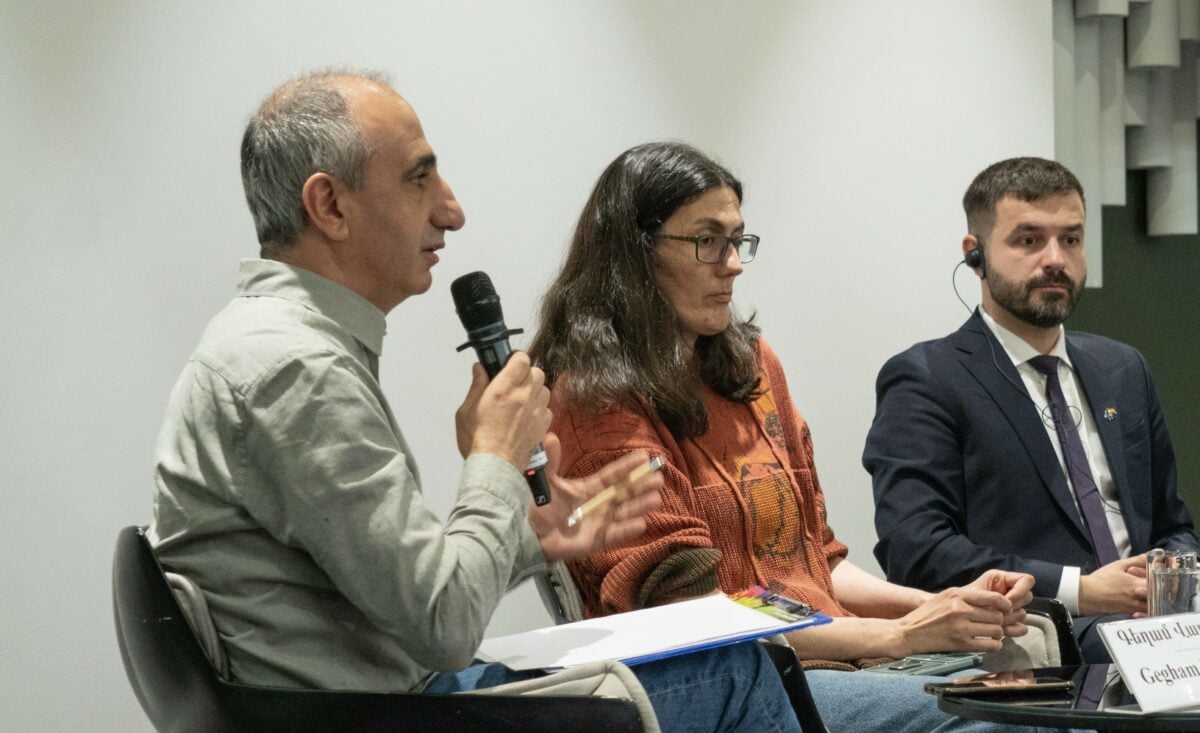For artist and curator Ara Haytayan, the steps of the state are a map by which you prove your existence. And for years the absence of such a map led to a major defeat.
And regardless of whether art helps, hinders, cures, or hurts, it always gives an opportunity to take one’s own step and find signs of national identity. Saying this, Ara Haytayan adds that we had largely prepared the defeat in that sphere with our own hands. And it became a model of greater defeat.
It seems that we live in a piece of widespread news and even lose the ability to separate the important and the empty. Does a person change?
Many close themselves in isolation (for example, I), realizing that it is impossible to live with that type of information flow. I’m not even talking about creating.
That flow does not even give us a key, it only causes confusion. And you lose your inner gauges, which are already few, but at least work our instinct, our sense of smell. And the information flows disrupt them and do not give anything new.
Maybe now you really need to isolate yourself from information so that you at least have the strength and breath in order to take the couple of steps that can be taken in this situation. For example, you want the morning to begin so you can work.
Eventually, we all realized that we were trapped in information.
The soldier understood, the parent understood, in a word, we all found ourselves in an information trap. Not only that, but our entire information system worked for that very trap. For the sake of propaganda.
Social media has been trained to be jarring in order to be noticed. What role does art play in these conditions?
That is a dual situation. If the burden falls on presenting more words, text, context, we see that what is done can be almost nothing, but since the narrative is strong, the work acquires value, not being that value.
And the artist thinks less about creating something that should speak for itself. It turns out that if there is no text, they are barefoot.
And if it does not talk about itself, supplements are required.
Even when we enter a museum, we look at the works less, we prefer to go down to the library (or go online) to read about those works. In other words, the philosophical layer of works begins to dominate, and the real work becomes just an occasion that leads to reading a text.
And it is not a conversation about good and bad, but just a fact. In a way, the art object as such becomes marginal. It is not a complex that you can open, but a small hint that opens questions.
For example, the Greek jar itself is so self-sufficient and beautiful that only after consuming it do you decide to read the hidden myth behind it. In other words, this jar is both a content and a visual whole, in which the artistic act has already been performed.
And if that act is not done, or is done somewhere else, in added contexts, it is already a different story.
Recently I was watching how the history of television was presented. There were important people who were simply erased from history, instead they were the ones who were able to talk a lot about themselves and make a good presentation of themselves. As a result, what actually happened is distorted.
In some respects, the methods of nation-building are more of a priority today than the methods of preserving the nation.
Nations can be created by combining several myths and giving the nation an identity (also new), and nations with sound and old foundations can be easily destroyed.
It seems that the priority is to create new things rather than to preserve the previous ones.
In the same way, today the curators in art are more powerful than the creators of art, because the curator is given a greater opportunity to build.
The “In Search of the Absent” exhibition, of which you were the curator, is built on an internal monolog. Social networks prompted everyone to express themselves. Is it striving for a monologue?
I myself don’t appear much on social media. I think people on social networks deal more with dialogues not monologues. But that dialogue always takes place from the right position.
In other words, you are always right, and next to you there are people, forces, the world, parties, who take the wrong steps and you see it. That is the general position.
And in the case of this exhibition, although we all had a demand for and a sensitivity to the monologue, the author, Edik Poghosyan, takes guilt and responsibility. It seems to me that the attraction of this exhibition is in that as well. People come to the point where they confess what they did or did not do wrong. And by buying the bombed items, they are willing to live with the point that will cause a feeling of discomfort.
During the war, many people sewed, weaved, assembled, raised, and transferred things. They wanted to be needed. Now it seems that nothing depends on us.
There is always a conversation about disaster and creation. Many have a sense of being between vitality and uselessness. I am sure, not only the creators of art.
In fact, it turned out that the only stability a person should create was within themself because, in reality, it does not exist.
You can go out on the street, understand the direction, the thing you’re going towards. That feeling was always there, but it became more relevant after the war.
Ultimately, we want to understand where the world is headed, what values, what system, except for a few directions that are either like false laws or become a mockery (say, the law of non-smoking). The attitude of the world becomes more ridiculous for us because on the one hand the pseudo-laws are formally applied, and on the other hand, we do not trust them.
It is also a period of the collapse of ideas about the common world. In our country, those blows come together. It was the same in 1988, when the collapse of the system, the earthquake, the war came together. Even now they come together.
In a way, that phase started with the coronavirus and the war was expected inside, because if the phase starts, then it does so completely.
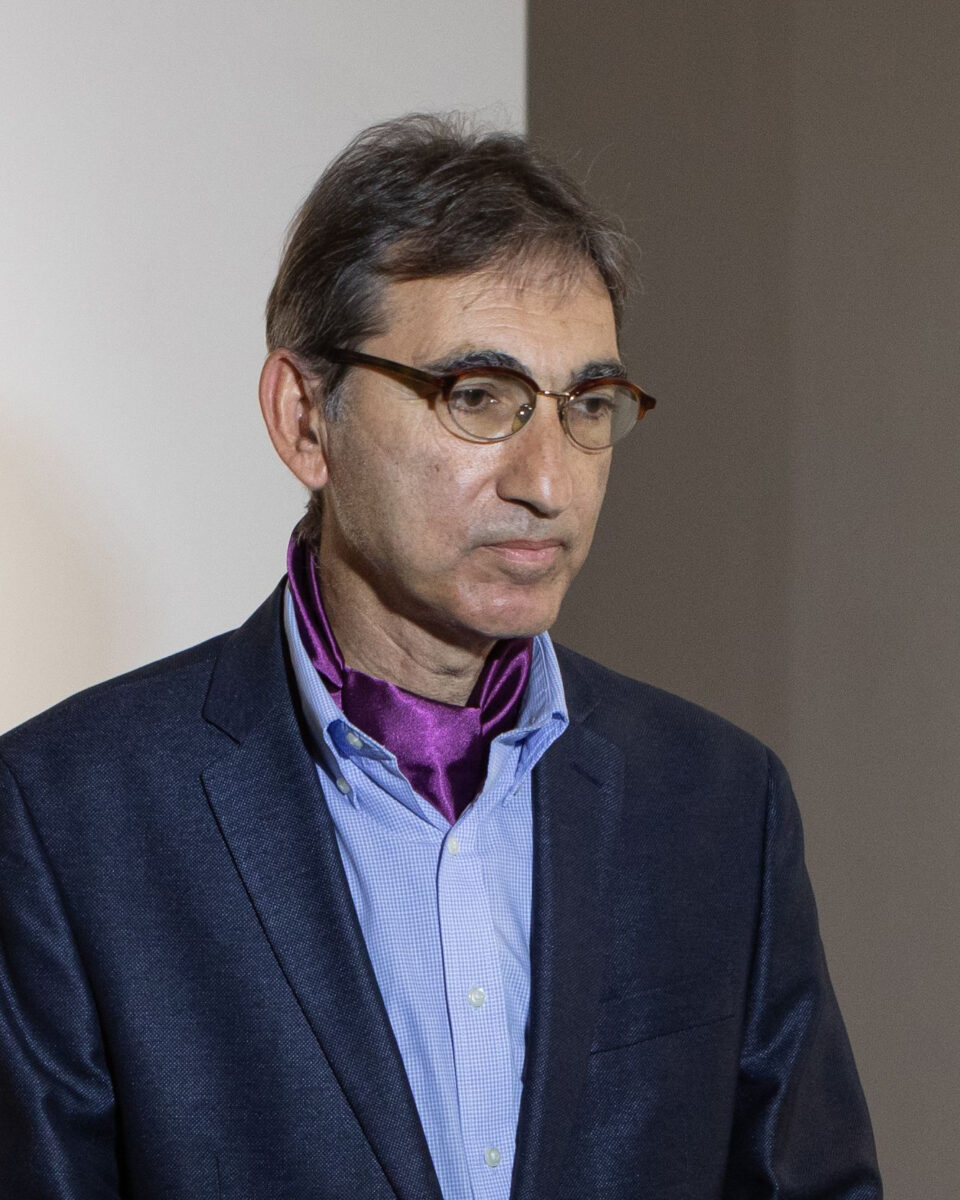
We were not ready for all this, physically, mentally, technically. We did not even know what gaps we really had in all spheres.
Not only were we not ready, but everything was done so that we would not be ready. It was done by our authorities.
I saw with my own eyes how in 2002 the Institute of Cartography, located in Sakharov Square, threw in the trash maps with packages, starting with the hand-drawn maps of Armenia of the 19th century by Jewish and Russian cartographers, ending with detailed descriptions of different districts of Yerevan.
The building had been sold, the institute had to be relocated, and those maps were considered useless.
I am sure it was not only negligence but a planned step.
And I personally took those maps out of the trash, because it was very interesting political material for me. Appearing in the territory of Armenia, the Russians, in fact, drew a map with the accuracy of millimeters and ratified the territory they had conquered.
And all that was simply destroyed.
Meanwhile, they were grounds. In this case, one of the grounds, which is relevant today, given that the issue of demarcation has arisen. But we see that it is the same in all spheres, the archiving was not done. For example, after 1991, no museum bought works of art to archive contemporary art.
I consider it not a coincidence, but clear instructions provided by the department heads. And it was not just a matter of not having money, but a position. In other words, civilization was being erased.
And, yes, for thirty years we have come to realize that it is still being destroyed by our own hands. And the people holding positions ensured that.
If you are not on social media, you do not seem to exist. If this exhibition had not been spread in the networks, it would have almost no response, it would not have made a sound.
The question is by what criteria do we register today whether something makes a sound or not. In human numbers? How many people saw and how many people remembered it? Or are there deeper measurement models?
The alarms in the cultural field were mainly aimed at the absence of these very criteria.
There are lustful words in the cultural concept: to preserve, to develop, to pass on to future generations. But they become flat words if it is not clear what the standards will be or what they will convey and develop. Their absence allows even the directors of secondary museums to do nothing today.
Not only not to be punished, but also not to be valued.
The director who splits themself in half, wanting the art center they run to live, is no higher than the other director, who just comes to the museum, drinks coffee and does nothing.
Accordingly, we can not distinguish between valuable and not valuable actions, as they are on the same level.
Doing nothing for years is considered “to do something.”
Of course, by saying this, I realize that there are devotees who do their job, but what they do is neither presented nor becomes a description of the country. And that non-presentation is a clear and precise position. The people in charge of each ring seem to be obliged to ensure defeat.
I felt it in 2012, after the Beijing Biennale when, first of all, our Ministry of Culture felt obliged to keep silent. It seems that everyone wanted to abort, silence and not allow Armenia’s success to be heard.
It was clear that this was Azerbaijan’s goal (which always appears where there is an Armenian presence to disrupt it), but first of all our success silenced our side, forbidding Azerbaijan to respond. In other words, the order to remain silent and lose came from Yerevan.
Azerbaijan was doing its job, but we saw that our state was also doing its job in Azerbaijan, with diplomats and art directors. And even when we came from Beijing victorious and wanted to be accountable for what we did, we saw that there was no media outlet that did not reject the meeting. (can be read here– edt).
After all, we have seen the efforts to take away art one by one during the last thirty years.
And they were all small models of a real war because in those years the war was in that field of identity, appearance, description and presentation.
And we lost all those wars, receiving instructions to remain silent, not to interfere, not to respond.
Often our embassies in different countries felt obliged to do so in such a way that our presence would not be heard and the success of the individual would not be seen.
Last year we could not have imagined that there would be a defeat of such a scale, but all the symptoms were visible. The defeat was not an accident and a surprise that suddenly fell from above.
If from the 1990s to 2006 they just kept silent, then the policy changed and the task was set to promote mediocrity and nothingness, and not those who could ensure progress.
The model of art is very important for understanding where we are now.
After all, the forces that do not allow art to be generated understand very well the potential of art, which is directly related to identity.
If we look at the past a little more broadly, say in the 1950-60s, we will see that the idea of an independent state was created in the arts.
With a dream?
Yes, I can even include in it how Saryan invented an Armenian style for the Opera House in the 1920s. I’m only talking about art, but it was probably the same in other fields, such as architecture, biology, and so on.
Small models of statehood were created in small cells. Each of them created their own variety and thus understood the national features.
And when we entered a large all-Union pavilion during the Soviet years, we immediately noticed the Armenian national features – the colors, being more linear and formal, less narrative. And that was the macro-identity of our identity in the cultural field, which distinguished us from the others.
Other republics could not put a difference of that scale and emphasis on the table like we did.
And in the last thirty years, first of all, under the guise of statehood, they destroyed those macro-powers, which were in search of a model of identity.
Even if they can counteract that it was the size allowed by the Soviets, the question is, why in at least thirty years didn’t we set the size?
Art was considered an island, that is, it was cut off from the context of world art and not noticing it was in a sense blind.
After all, art is an imperial phenomenon, and small nations must master a serious system so that they can classify themselves, open it like a large mosaic, and place it in a large context, both ensuring their presence and emphasizing their difference.
It is very interesting how, for example, Denmark, a small country like us, presents its art. We did not try, for example, to put our Impressionist Yeghishe Tadevosyan next to the French Impressionists in one hall as equal phenomena. And Denmark does.
We still divide the collections into Armenian, Russian and European. And thus we put ourselves out of the context of the world.
Just as the Armenian ghetto in the Diaspora is cut off from the country where they live in order to be able to keep their identity as an island.
But in the end, the statehood of Armenia made it possible not to have that island or ghetto. If in other countries the danger is assimilation, then in the case of a state structure the danger is simply not being.
I have always been interested in the phenomenon of people from the Diaspora establishing themselves in Armenia. Even now, after this defeat.
People are coming (some young, some not so much) having their narrow model of Armenianness. In the family and in their ghetto, they were told, remember, you are this species, you are different and you must maintain this difference. And suddenly that narrow model collapses in Armenia.
They see that they can be much wider.
For example, not to eat dolma, but to exist. Not to know Armenian, but to exist. To have different skin and eye colors, but to feel Armenian. They feel the breadth of their potential.
Armenia reminds them that it is possible to be complete by being different. And that is the gravitational force of the state.
You can be diverse in Armenia and you can be. And to understand very well that leaving Armenia, even to the seemingly wider world, you will be deprived of that opportunity.
I think that is the phenomenon of Armenia.
Interview by Nune Hakhverdyan

